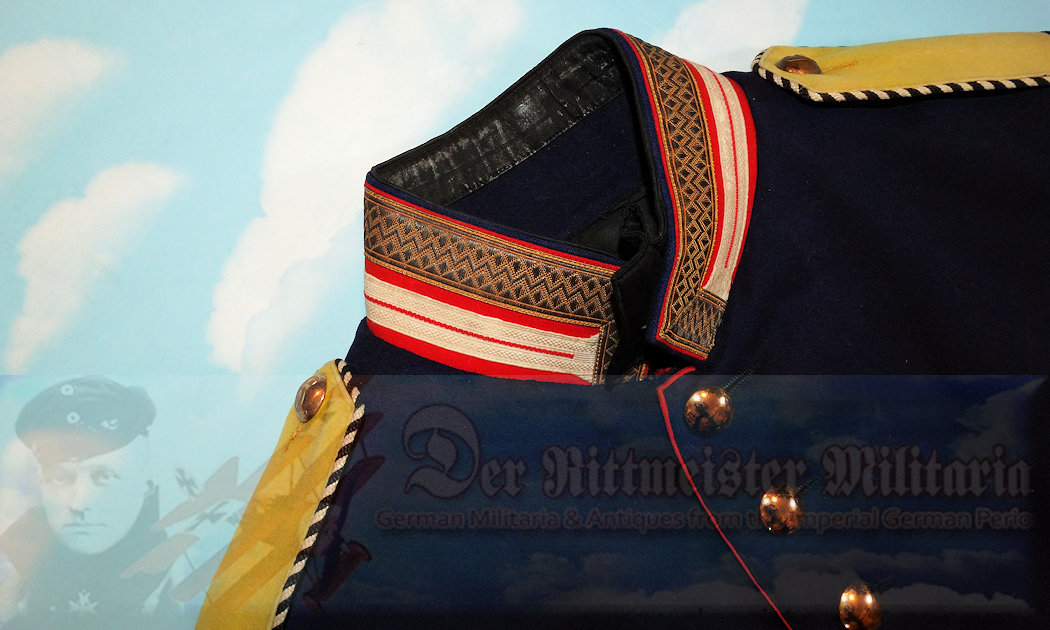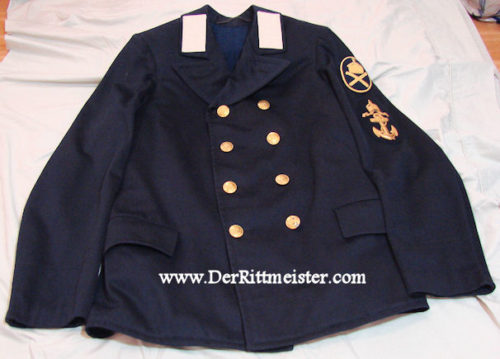Description
PRUSSIA – TUNIC – ONE-YEAR-VOLUNTEER – 3. GARDE-REGIMENT ZU FUß.
We were quite pleased to recently acquire this tunic. It is not often that we can offer you a One-Year-Volunteer (OYV) tunic, particularly one from a Garde-Regiment. Yet that is exactly what we are offering today! You will remember that the OYV program required its participants to pay for their meals, their housing, and ALL of their personal gear (including uniforms and headdresses), in return for an enlistment period of only one year rather than the normal two. The OYV’s were not able to draw from army depots for any of their personal gear.
Part of what makes OYV tunics and headdresses so popular is the fact that they generally are officer-level quality. Additionally, only a limited number of men were allowed to enter the program. Being able to assume personal responsibility for their military expenses meant they generally came from middle/upper class families that could afford the extra costs. In many cases, these families could exert enough influence to get their sons into the better regiments like the 3. Garde-Regiment zu Fuß. These young men often purchased their personal gear at the same stores as their officers.
The 3. Garde-Regiment zu Fuß Regiment was formed in 1860 during the reign of König/Kaiser Wilhelm I. It was garrisoned in Berlin and, like all Garde-Regiments, it was attached to the GardeKorps.
The 3. Garde-Regiment zu Fuß tunic is of the prewar dunkel-blau variety, a high-quality, dark-blue wool. Eight brass-toned buttons run down the tunic’s center. The collar sports a silver-bullion border embellished with a pattern of gold-thread-outlined diamond-shapes above a red and white striped, cotton base. The sleeves each sport two gold buttons, each of which is attached to a white strip of ribbon with a single red thread-line running partway down from the button’s center. The sleeve’s cuffs are made of red felt bordered on the top by the same silver-bullion/gold-thread diamond ribbon pattern as the collar. The shoulder straps display a plain yellow background with NO regimental designation or cypher, whose edges are trimmed with a thin, black and white, thread braid confirming its status as a Prussian Regiment. The small brass buttons that secure the straps are engraved with its Kompagnie Nr, a “6.”
The 3. Garde-Regiment zu Fuß tunic’s reverse displays six more brass buttons (three per side) on the vent flaps, which are trimmed in red. The interior of the tunic is lined in officers-quality, black silk. Imperial German Army Depot-issued, enlisted men’s tunics usually were made of cotton, so THIS tunic definitely was privately-purchased.
This 3. Garde-Regiment zu Fuß tunic definitely has a condition concern, as its front skirts exhibit considerable mothing, particularly on its right side. For that reason, the tunic is VALUE-PRICED. Were it in better condition, it could easily cost $1,500 or more.












